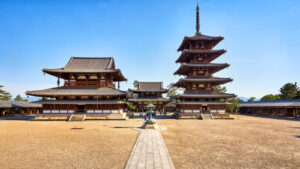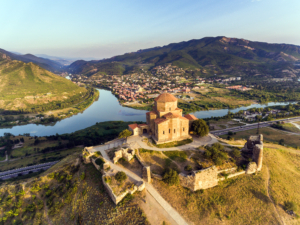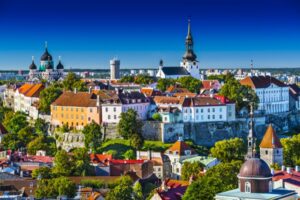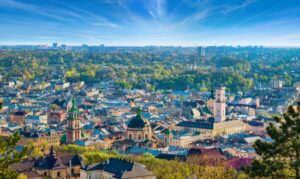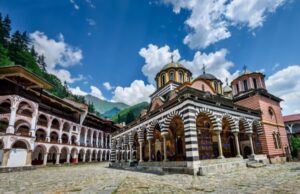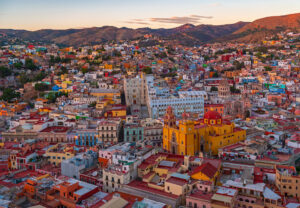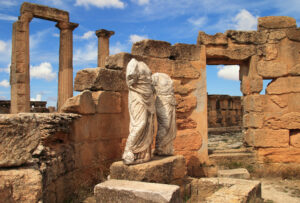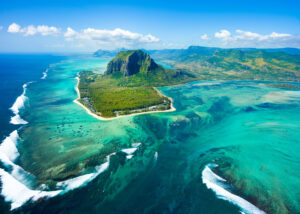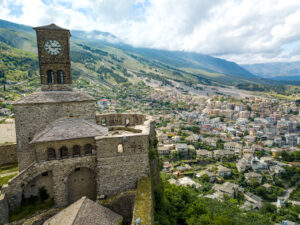| Registration Classification | cultural heritage |
| Registration Criteria | (1), (2), (4), (6) |
| Year of registration | 1993 |
“Buddhist Monuments in the Horyu-ji Area” in Nara Prefecture are famous for being registered as a World Heritage Site, especially Horyu-ji Temple. By the way, why is Horyu-ji Temple registered as a World Heritage site? Surprisingly, you may not know!
Here, a World Heritage enthusiast explains in an easy-to-understand manner why the Buddhist monuments in the Horyu-ji area are World Heritage sites in this issue. Read this and you will definitely learn more about Horyu-ji Temple!
National treasures everywhere! Where are Buddhist buildings in the Horyu-ji area, a World Heritage Site?
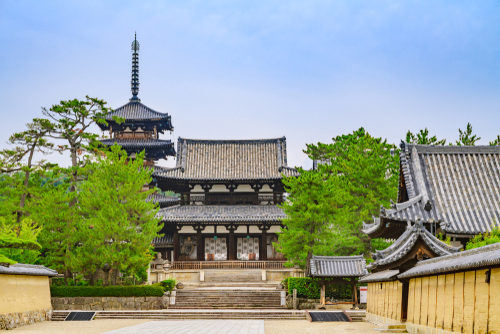
Some of the buildings of Horyu-ji Temple in Ikaruga-cho, Ikoma-gun, northwestern Nara Prefecture, are known as the oldest existing wooden structures in the world. Listed on the World Heritage List are 47 buildings belonging to Horyu-ji Temple and the three-story pagoda of Hoki-ji Temple, located about 1.5 km to the northeast. This is an early temple built around the time of the spread of Buddhism in Japan in the 7th century and greatly influenced Japanese temple architecture.
The Kondo and Gojuno-to (five-story pagoda) in Horyu-ji’s Seiin complex and the Yumedono (dream hall) in the Toin complex are registered as national treasures, and the three images of the Buddha in the Kondo (national treasure) are Buddhist statues dating back to a whopping 7th century.
The History of Horyu-ji Temple Explained in Simple Terms
When was Horyu-ji built?
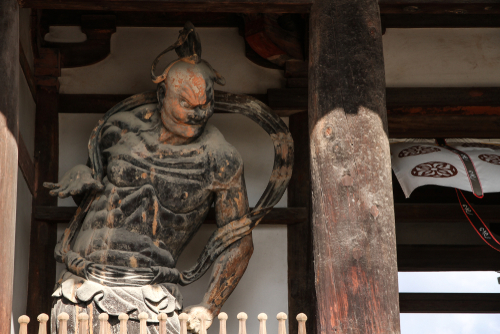


Horyu-ji Temple is thought to be based on Wakakusa Garan(Ikaruga-dera), built by Prince Shotoku (593-622) in 607. However, when this Wakakusa Garan was lost in 670, the current prevailing theory is that the current Horyu-ji was moved from Wakakusa Garan and rebuilt over the 7th and 8th centuries.
Horyu-ji has always been protected by the Emperors, and since the 12th century, the “Prince Shotoku faith” has spread throughout the country, with many people making pilgrimages to the temple. This is not only the world’s oldest wooden architectural masterpiece, but also an important heritage in that Buddhism was propagated in Japan.
In the early Meiji period (1868-1912), Horyu-ji belonged to the Shingon sect of Buddhism, but in the mid-1950s it became independent as the Hosso sect, like Yakushi-ji and Kofuku-ji in Nara, and in 1993 it was registered as a World Heritage site.
What are the features of Horyu-ji Temple? Can you see the entasis technique?
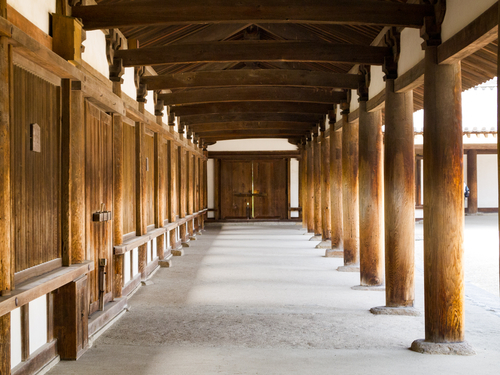


Chinese architectural styles can be seen in the current buildings that are said to have been reconstructed, and the pillars of the west building and the five-story pagoda show entasis, the bulging of the central part of the pillar, as seen in the Parthenon in Greece. It is generally believed that “Greek techniques were introduced to Japan via the Silk Road,” but this is only a popular theory; in fact, no transit route has been found, and it is believed to have come from China or Korea.
Who built Horyu-ji Temple? Was it Prince Shotoku who built it?
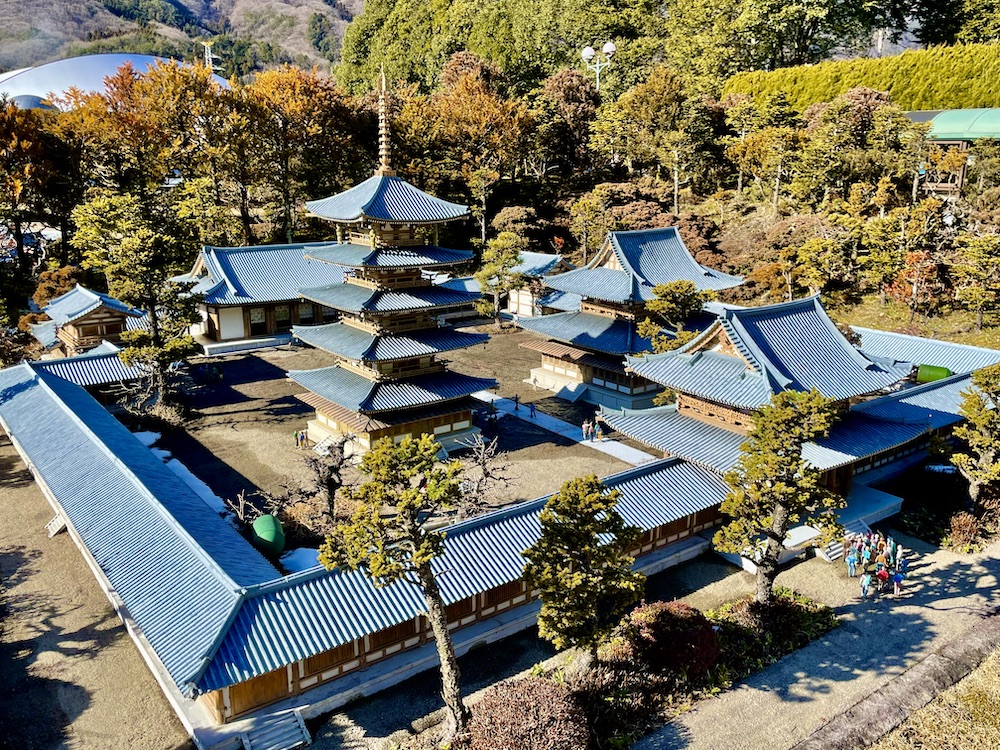


The founder of what is now Horyu-ji Temple (the person who opened the temple) was Prince Shotoku. He was the son of an emperor, and when his aunt, Emperor Suiko (554-628), ascended to the throne, he became the crown prince as Umayato (his designation, although it is not found in ancient documents). That being said, he was definitely at the center of politics, and he is also famous for his development of the Ritsuryō (law and order) state.
In 601, he built Ikaruga Palace, a palace room, in order to move from Asuka-kyo, the capital at that time, to this area, and in 607, he initiated the construction of a temple for his late father, Emperor Yomei. At that time, it was called Ikaruga-dera Temple, and this is the origin of Horyuji Temple. However, it was destroyed by fire in 670 after the death of prince. No structures from that time remain. The remains of Wakakusa Garan, located southeast of the current west building, are the remains of Horyu-ji at the time of its foundation.
For what reason are the Buddhist structures in the Horyu-ji area inscribed on the World Heritage List?
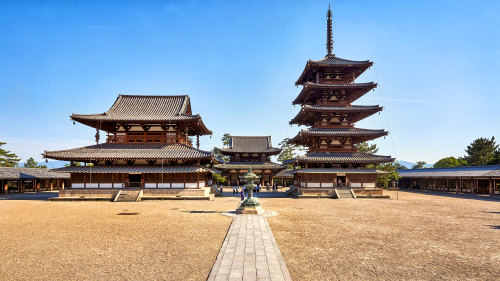


What Buddhist structures in the Horyu-ji area were evaluated? The following points.
Registration Criteria (i)
The fact that it is the oldest wooden building in the world and a masterpiece in design and decoration.
Registration Criteria (ii)
It is an early example of Buddhist architecture in Japan, which means that it has had a great influence on later temple architecture.
Registration Criteria (iv)
The point is that Horyu-ji Temple demonstrates how Buddhist architecture that came from China was adapted to Japanese culture and developed a uniquely Japanese architectural style.
Registration Criteria (vi)
That the promotion of Buddhism by Prince Shotoku was an important stage in the history of religion in Japan.
“Horyu-ji Temple is a masterpiece of wooden architecture that combines Chinese Buddhist architecture and Japanese culture, marking the arrival of Buddhism in Japan around the 7th century and eventually influencing temple architecture throughout Japan.”
So that’s what it means. The registered site is actually composed of two properties: Horyu-ji Temple and Hoki-ji Temple.
・Horyu-ji Temple
・Hoki-ji Temple
Let us explain them one by one.
Introduction to the Components of Horyu-ji Temple
1.Horyu-ji Saiin Garan
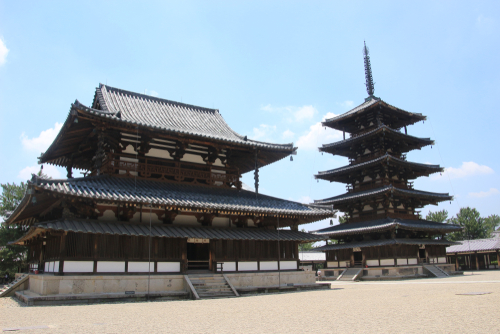


This is the site where the Wakakusa Garan, built by Prince Shotoku, once stood. Kondo was rebuilt around 711, followed by the five-story pagoda, large lecture hall, and other structures.
The layout of the site, with Kondo to the east and the five-story pagoda to the west in the center of the site, is called the “Horyu-ji temple complex layout,” and consists mainly of Kondo with its Buddhist statues and the five-story pagoda, which has its roots in the stupa that housed the remains of the Buddha. The buildings use “kumogata kumimono,” which strengthens the joints between pillars and beams, an architectural art that was introduced to Japan along with Buddhism. The three statues of Buddha in Kondo were built after the death of Prince Shotoku, and their forms show the influence of Chinese culture.
The Chu-mon Gate, which is also the entrance to the site of Horyu-ji, is a “shikenmon” gate with a pillar in the center of the gate. On either side are statues of Kongorikishi, built in the Kamakura period (1185-1333).
2.Horyu-ji Toin Garan
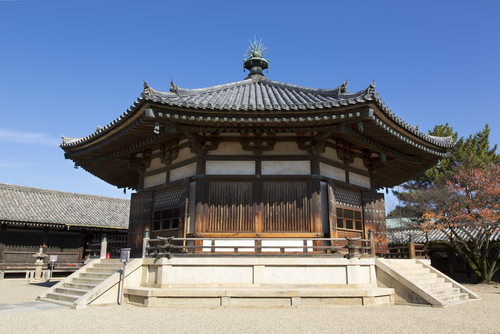


Originally built in the 8th century on the site of Ikaruga Palace, where Prince Shotoku lived. Yumedono was built in the early 8th century and is the oldest existing octagonal circular hall. The roof is in the unique style of “Hachu-tukuri”. The principal image is a standing image of Kusei Kannon Bosatsu, which is said to represent the face of Prince Shotoku, and was discovered by Okakura Tenshin and others in the Meiji period.
3.Hokki-ji Temple
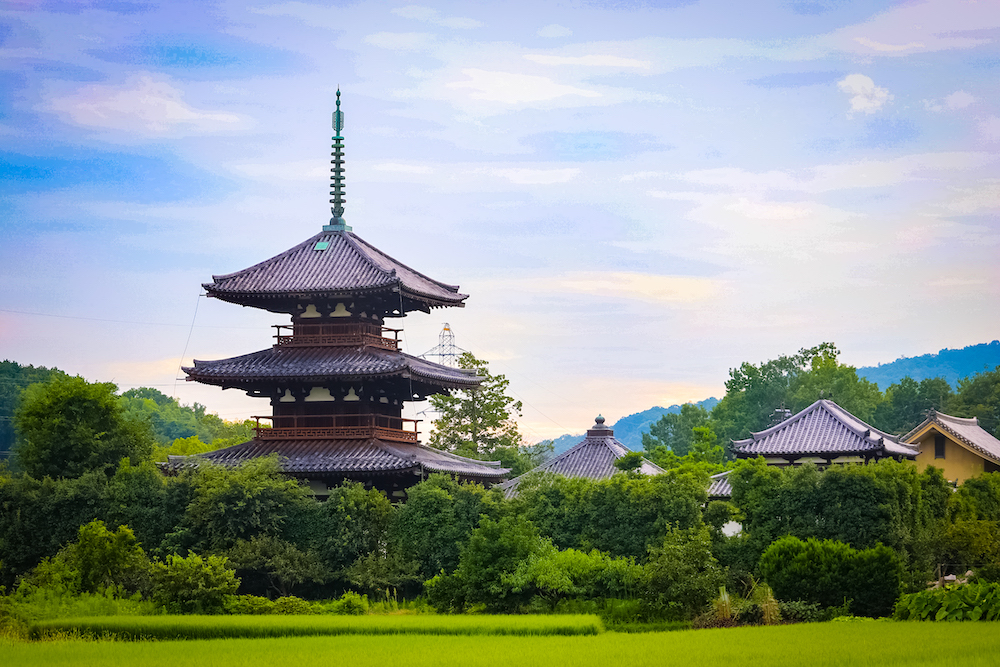


Located about 1.5 km northeast of Horyu-ji Temple, this is one of the seven major temples built by Prince Shotoku. Other than the three-story pagoda that remains within the precincts of the temple, the only registered structure is the 24-meter-high three-story pagoda. In fact, in terms of the date of commencement of construction, it is said to be older than the five-story pagoda of Horyu-ji Temple (although it is sometimes said that the five-story pagoda of Horyu-ji Temple was completed earlier).
Conclusions and Impressions of a World Heritage Maniac
Horyu-ji Temple, which about half of Japanese people have probably visited on a school excursion, is surprisingly difficult to explain as a World Heritage site. Everyone knows that Horyu-ji is the oldest existing wooden structure in Japan, which is a correct evaluation criterion, but it is also very valuable because it was an early Japanese Buddhist temple where European architectural techniques were introduced via the Silk Road, and it greatly influenced later Buddhist architecture in Japan. Incidentally, Horyu-ji Temple was built in the same way as Horyu-ji Temple.
Incidentally, Horyu-ji Temple was built on the site of Wakakusa Garan (the original Horyu-ji Temple), where the Ikaruga Palace where Prince Shotoku lived and Ikaruga Temple was built by Prince Shotoku. In other words, please note that the Horyu-ji seen today was built after Taishi disappeared!
*The contents here are considerations derived from research conducted by World Heritage enthusiasts.As for the data, interpretation differs depending on the medium.
